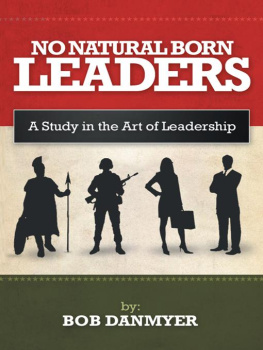Mutiny and Leadership

Great Clarendon Street, Oxford, OX2 6DP, United Kingdom
Oxford University Press is a department of the University of Oxford. It furthers the Universitys objective of excellence in research, scholarship, and education by publishing worldwide. Oxford is a registered trade mark of Oxford University Press in the UK and in certain other countries
Keith Grint 2021
The moral rights of the author have been asserted
First Edition published in 2021
Impression: 1
All rights reserved. No part of this publication may be reproduced, stored in a retrieval system, or transmitted, in any form or by any means, without the prior permission in writing of Oxford University Press, or as expressly permitted by law, by licence or under terms agreed with the appropriate reprographics rights organization. Enquiries concerning reproduction outside the scope of the above should be sent to the Rights Department, Oxford University Press, at the address above
You must not circulate this work in any other form and you must impose this same condition on any acquirer
Published in the United States of America by Oxford University Press
198 Madison Avenue, New York, NY 10016, United States of America
British Library Cataloguing in Publication Data
Data available
Library of Congress Control Number: 2021933262
ISBN 9780192893345
ebook ISBN 9780192645401
DOI: 10.1093/oso/9780192893345.001.0001
Printed and bound by
CPI Group (UK) Ltd, Croydon, CR0 4YY
Links to third party websites are provided by Oxford in good faith and for information only. Oxford disclaims any responsibility for the materials contained in any third party website referenced in this work.
For the leader of an army mutiny in Devizes, 1949
Contents
This book has been several years in the making. I have used the concept of mutiny as a way of understanding leadership and power for many years, and I would like to thank all the students, civil and military, who have suffered the consequences, conceptual and physical, of my burbling. Mutiny is, by definition, a social not an individual action, and so is writing a book about it because without my co-teachers, and all of the authors whose material I have read, none of this would be possible. In the former category I particularly want to thank Alex and the boys at Warwick for all their support over the years. I would also like to thank Adam Swallow at Oxford University Press for his encouragement and support in this project, Thomas Deva for managing the project, and Wade Guyitt for the copy editing. Finally, I would like to thank all my family for putting up with yet another book. The support of the adults (Sandra, Katy, Beki, Kris, Richie, Adam, and Becky) and the rebellion of the children (Lola, Livi, Nate, Nell, and Daphne) has proved an important point: resist much, obey little.
History never repeats itself but it rhymes
(attributed to Mark Twain)
Mutiny and leadership are two sides of the same coin: as soon as leadership emerges within a group there will be resistance to that leadership. It has always been thus. From what we know about our ancestors in hunter-gatherer societies from their contemporary incarnations, we know that reverse-dominance hierarchiesattempts by subordinates to organize against the superordinate to either discipline or overthrow themare omnipresent (Boehm, ), where leadership is embodied in coalitions, not individuals. But mutiny is a different form of resistance to that employed in most organizations. Generally speaking, where the subordinates are unhappy with their lot, they will either remain passively unhappy or rationalize their unhappiness (it could be worse, at least we are alive) or do something about it. What they do about their unhappiness depends on a whole raft of issues, including the time and space for the resistance, the resources available to them, the legitimacy of their oppression and resistance, the presence of enough people willing and able to lead the resistance, and, of course, the equivalent issues for those deemed by the oppressed to be the oppressors. Since mutiny is, by definition, limited to social rather than individual dissent, and to military or naval organizations rather than all organizations, the leadership of both sides in a mutiny are often encased in a different aspic than their equivalents elsewhere.
Elsewhere, social dissent might take the form of a protest, a go-slow, a strike, a march or sit-in, or any one of hundreds of other manifestations of dissent that are visible every day. For example, on the day this section was written (7 October 2019) there were reports of overt public dissent in Hong Kong (anti-government), Iraq (unemployment and corruption), and Britain (Brexit and Extinction Rebellion). When I first came to revise this section, on 10 November 2019, a mutiny by the Bolivian police began the slow overthrow of President Morales. The final edit occurred on 5 June 2020, at which point COVID-19 was rampaging through the world, and protesters marched through large numbers of American, and indeed European, cities after the death of George Floyd in Minneapolis.













